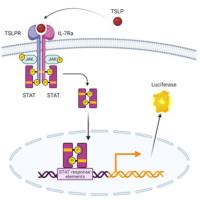Investigating Gene Expression: In Situ Hybridization and Reporter Genes
Coordinated cell type differentiation is essential for morphogenesis during Dictyostelium development. The specification of different cell types and the regulation of temporal and spatial patterns of expression of cell type-specific genes are important problems currently being addressed in many laboratories. Besides, determination of gene expression patterns provides significant information in the characterization of developmental mutants. Cell type-specific probes and well characterized promoters are available that allow the identification of most cell types during Dictyostelium development. Expression patterns can be studied by whole-mount in situ messenger RNA (mRNA) detection and by the use of reporter genes under the control of specific promoters. The most common in situ hybridization technique, based on nonradioactive ribo-probes that are hybridized to fixed whole-mounts prepared at different developmental stages, is described. Several reporter genes have been used to characterize gene expression patterns and to determine functional promoter elements. The lacZ gene, coding for the β-galactosidase enzyme, is the reporter most frequently used in Dictyostelium because both temporal- and spatial-patterns of expression can be easily determined. Generally used β-galactosidase detection methods are described.
![预览]()






